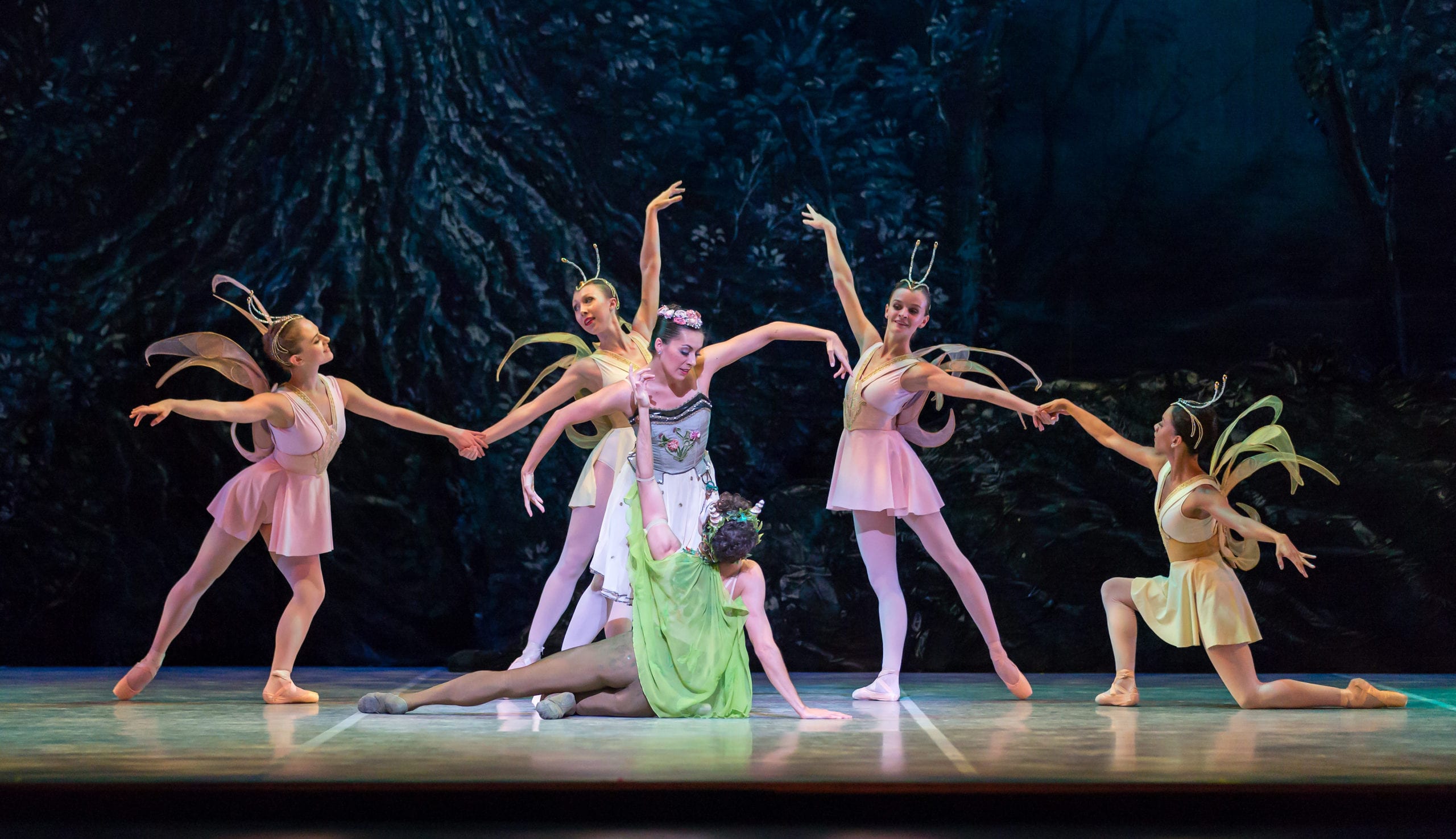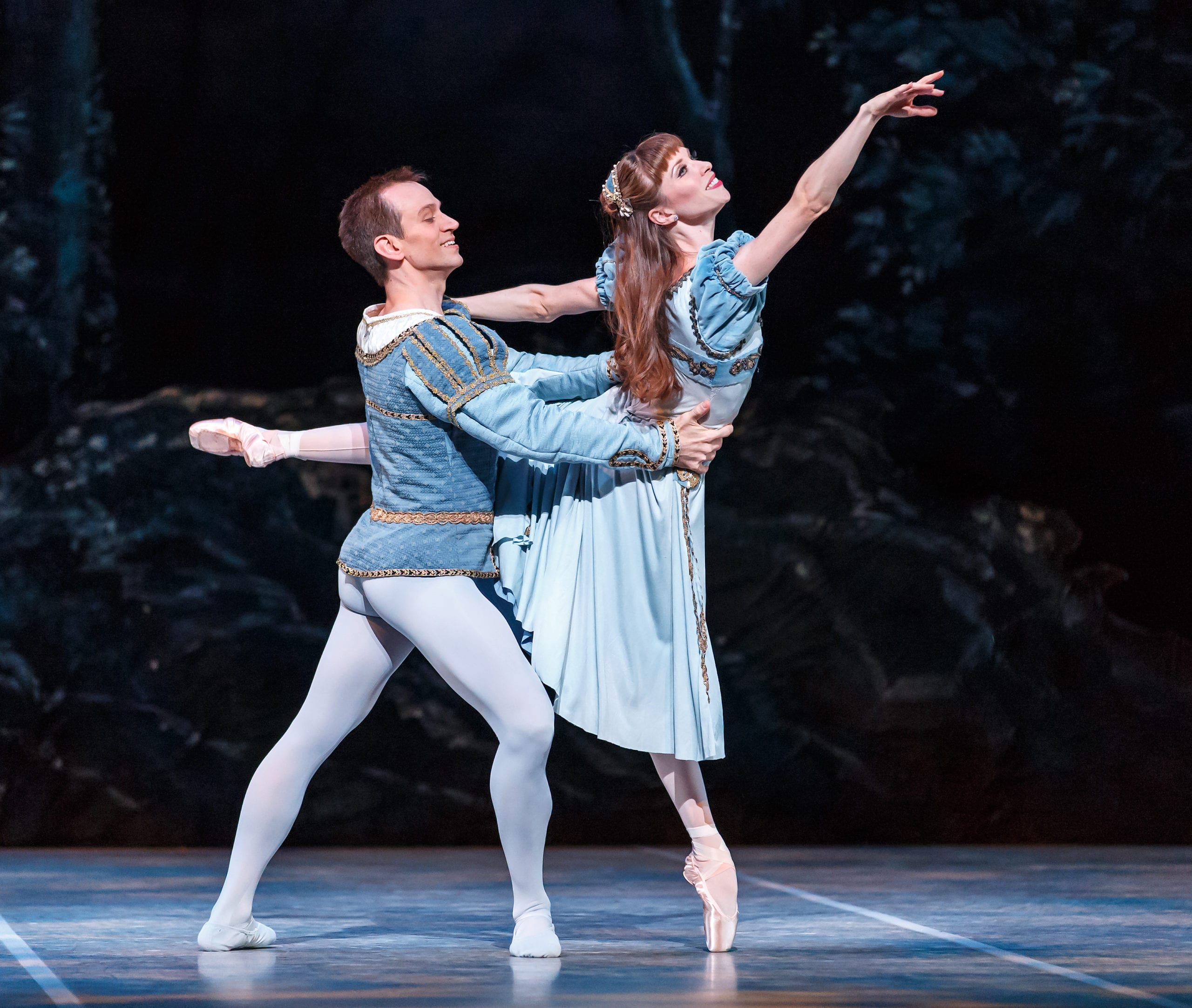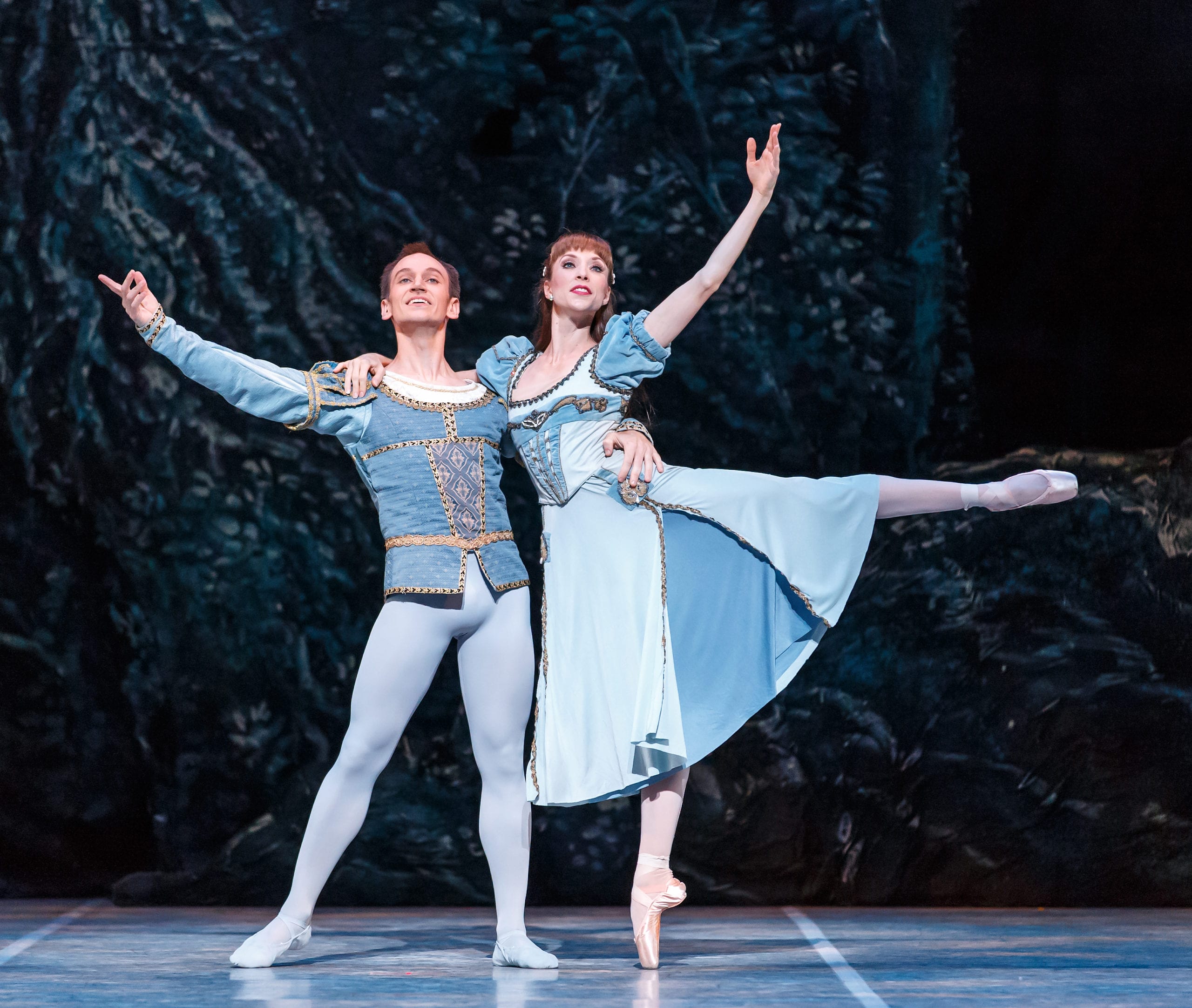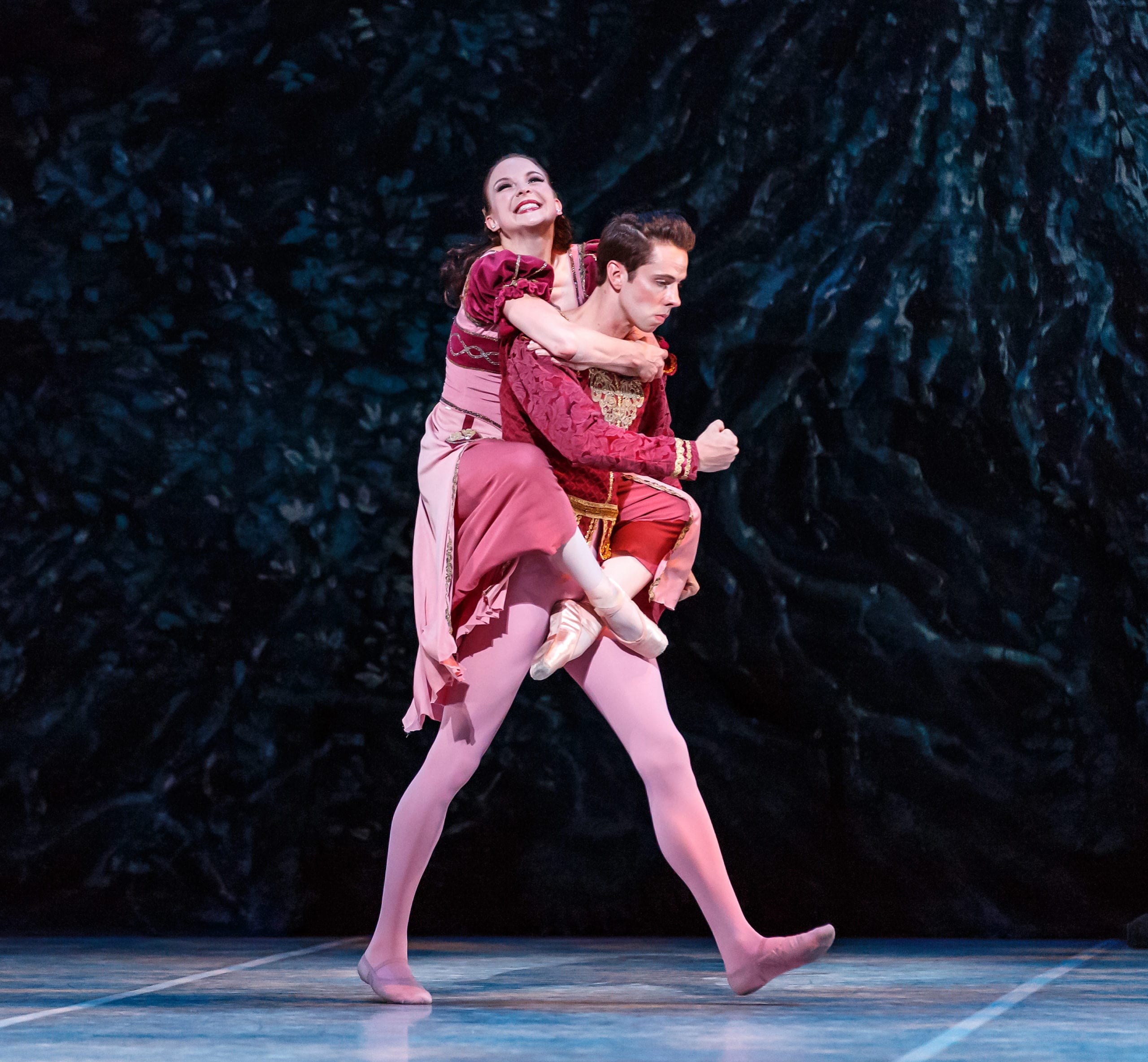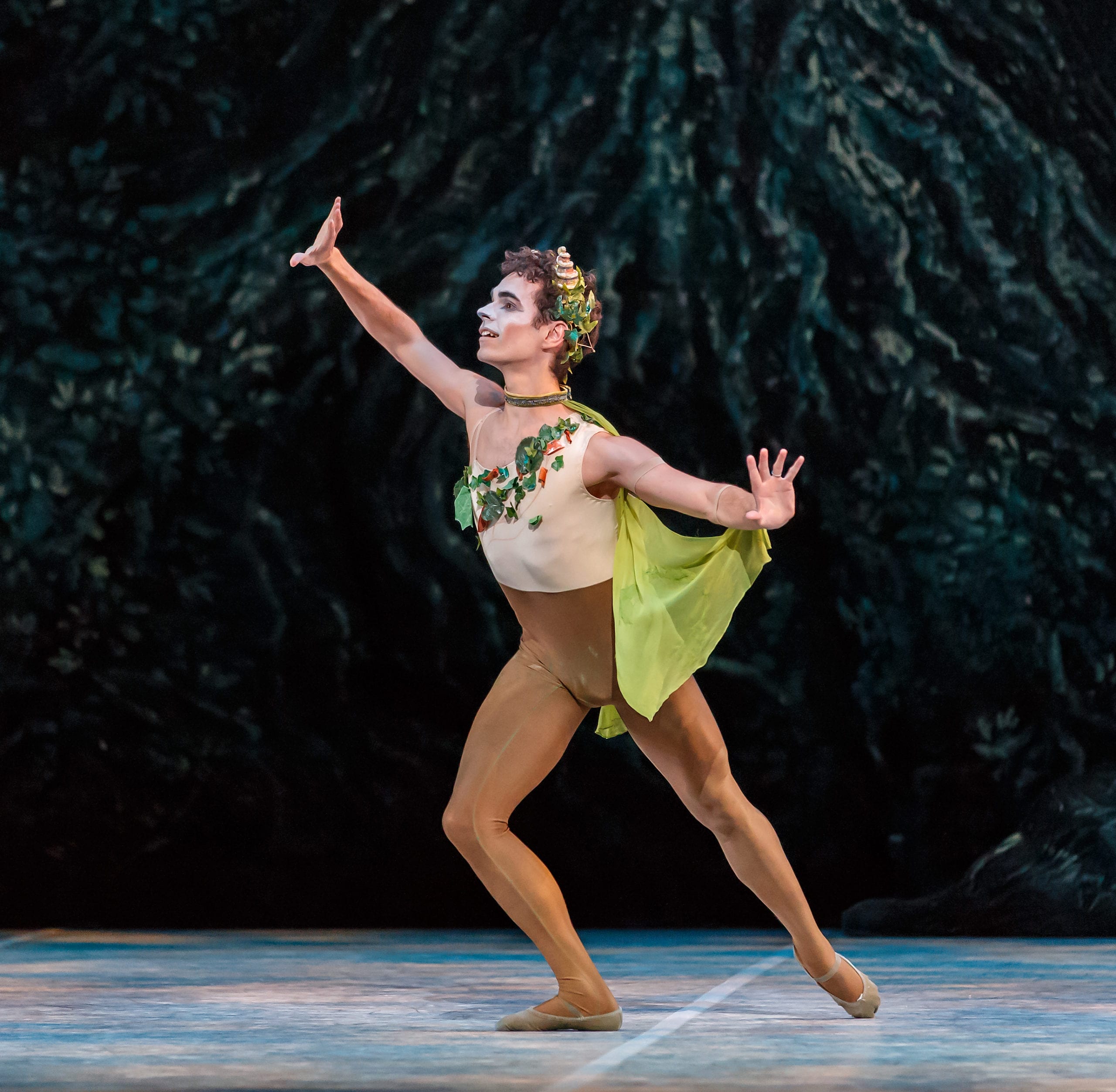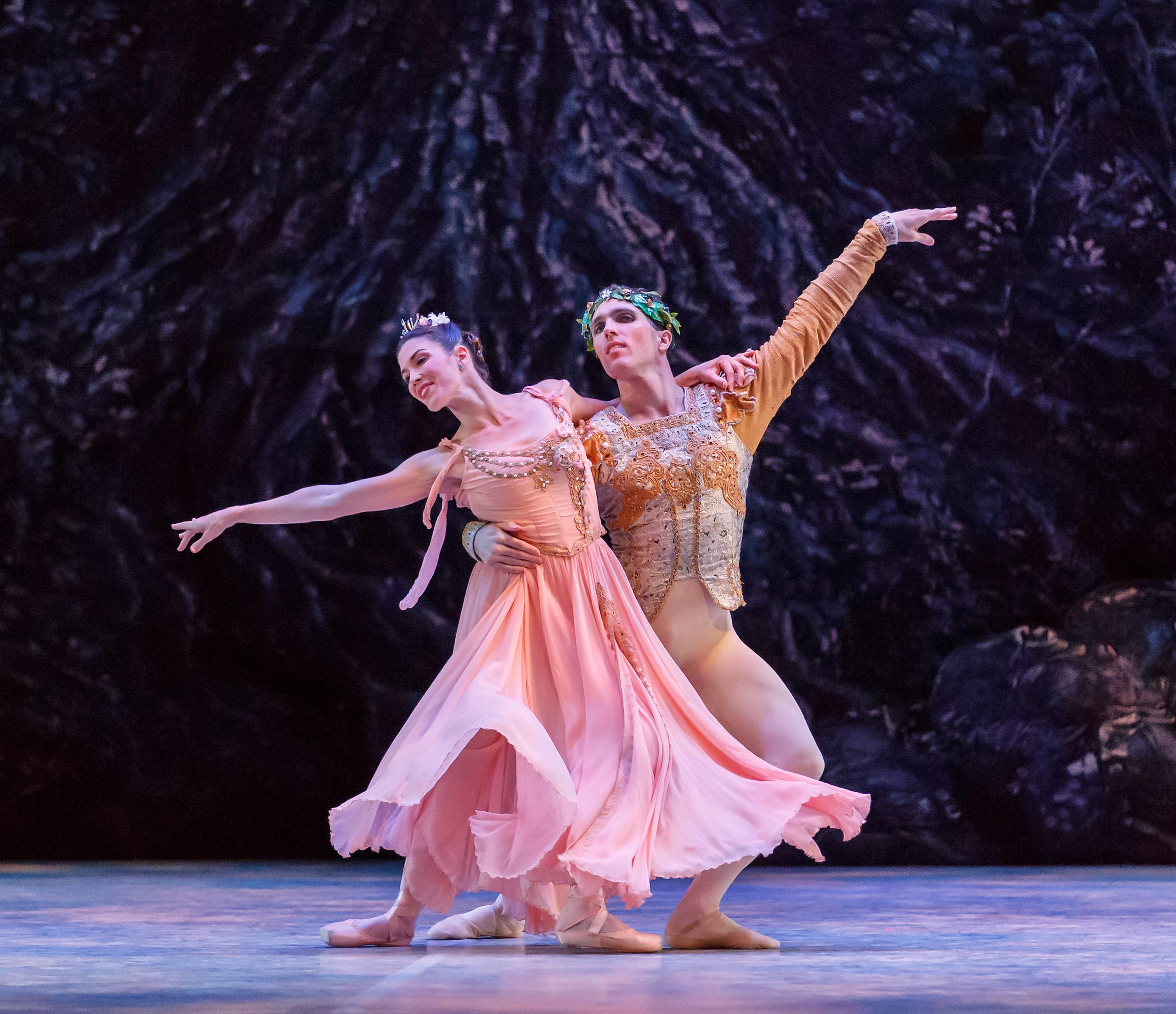A Midsummer Night’s Dream
Love is in the air and comedy is afoot in the enchanted forest.
Delight your Valentine with a trip to an enchanted forest, where mortal and magical beings deliver loads of laughs while looking for love! Artistic Director Stephen Mills presents William Shakespeare’s tale of premarital mix-ups in a playful ballet that’s perfect for all ages. A MIDSUMMER NIGHT’S DREAM showcases Mills’ choreographic agility and his dancers’ comedic talents. The production is so beloved that the prestigious John F. Kennedy Center for the Performing Arts in Washington, D.C., invited Ballet Austin to perform MIDSUMMER on its stage in January 2002, and this light-hearted romp remains a favorite with Central Texas audiences. Treat your special someone to the original rom-com!
CHOREOGRAPHY: Stephen Mills
MUSIC: Felix Mendelssohn
LIVE ACCOMPANIMENT: Austin Symphony Orchestra
3 PERFORMANCES:
- Friday, Feb. 11, 2022, at 8 p.m.
- Saturday, Feb. 12, 2022, at 8 p.m.
- Sunday, Feb. 13, 2022, at 3 p.m.
A Midsummer Night’s Dream, as staged for Ballet Austin’s performances at the Kennedy Center, runs one hour, without intermission. Masks are required at all times.
A Midsummer Night’s Dream is suitable for all ages.
SYNOPSIS
In the woods of Athens, Puck, a mischievous sprite, and Cupid, his friend, are frolicking when Oberon, King of the Fairies enters. Soon after Oberon arrives, his Queen, Titania, enters, holding the Changeling Child. She has been entrusted to care for the child but it is Oberon’s intent to make the child his page. Titania refuses to allow it and the two quarrel. Titania assures him that he will never possess the child, and she leaves in haste.
Hermia is in love with Lysander, but she has been betrothed to Demetrius. In order to escape the arrangement, Hermia and Lysander run into the woods. Meanwhile, Oberon, who is still angered by Titania’s refusal to release the child to his authority, is interrupted by two mortals, Helena and Demetrius. Helena (Hermia’s friend), who happens to be infatuated with Demetrius, has run to Demetrius’ side and has told him of Hermia and Lysander’s secret escape. Demetrius and Helena are in the forest in search of the forbidden lovers. Oberon becomes aware of the young lovers’ troubles and decides to intervene. Oberon wants Demetrius to fall in love with Helena.
Oberon orders Puck to fetch a flower containing a love-inducing nectar. When dropped into the eyes, the nectar causes that person to fall in love at first sight. Puck confuses Demetrius’ identity with that of Lysander and spills the potion over Lysander’s eyes. The error is compounded when Helena becomes the first to capture Lysander’s sight, and thus, his heart. Demetrius also falls under the influence of the spell and pursues Helena. Hermia is confused and a chase through the woods ensues.
In the Kingdom of the Fairy Queen lies the sleeping Titania. Oberon comes upon his sleeping Fairy Queen and drops the juice of the flower into Titania’s eyes. He waits for the spell to take effect. Meanwhile, the mischievous Puck, who is just outside the Fairy Queen’s Kingdom, has come across a group of Mechanicals. The Mechanicals are actors, who have come together to rehearse a play. Being the prankster that he is, Puck decides to transform one of the actors, Bottom, into a donkey. Next, Puck strategically situates Bottom next to Titania. Titania, who is under the spell of the flower, sees Bottom and falls desperately in love with him.
Oberon relishes in the confusion but is enraged with Puck for mismatching the mortals. Seeing that his Queen has been humiliated, Oberon regrets his actions and releases her from the spell. Oberon restores order by appropriately pairing off the mortals. Hermia is happily united with Lysander, while Demetrius with Helena. Bottom is restored to his human form and Titania joins her King. A true midsummer night’s dream.
VIDEO LIBRARY
BY PAUL MICHAEL BLOODGOOD
PHOTOGRAPHY FROM A MIDSUMMER NIGHT’S DREAM
BY TONY SPIELBERG
MEET THE ARTISTS

STEPHEN MILLS
Choreography
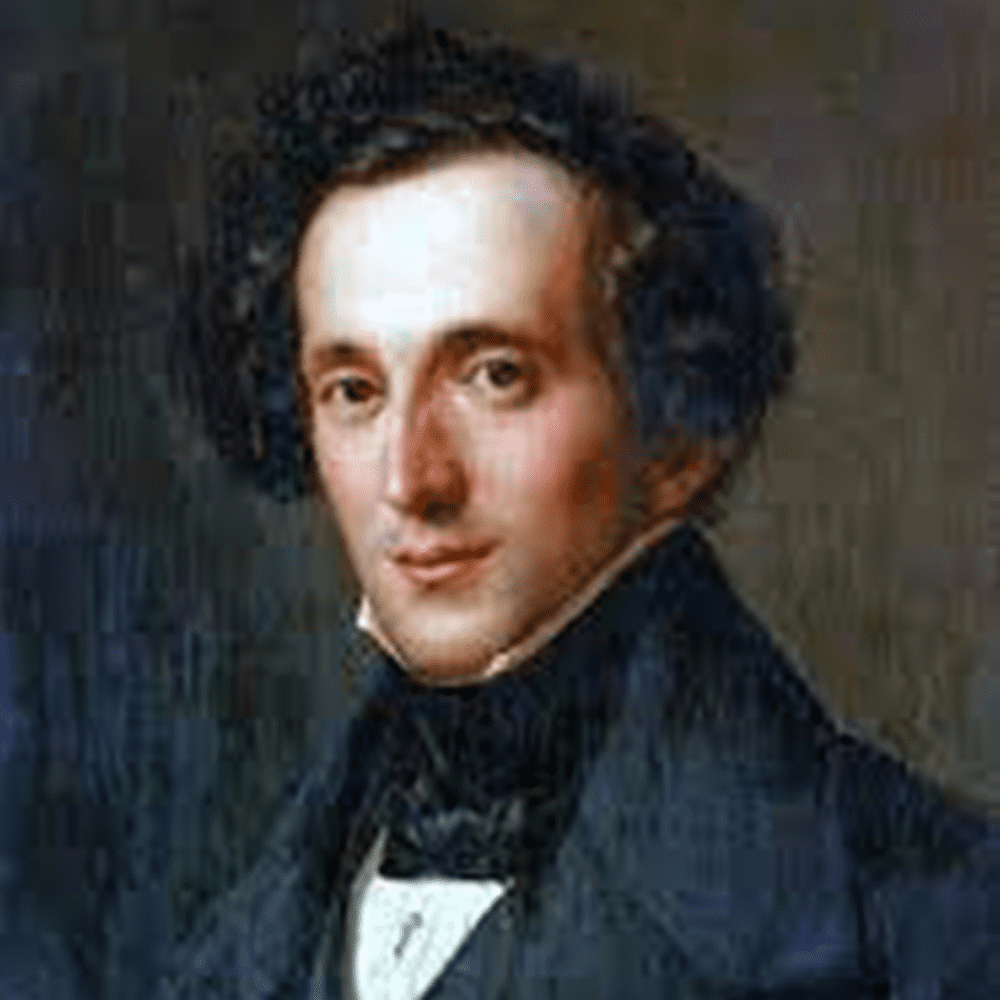
FELIX MENDELSSOHN
Music

AUSTIN SYMPHONY ORCHESTRA
Live Accompaniment
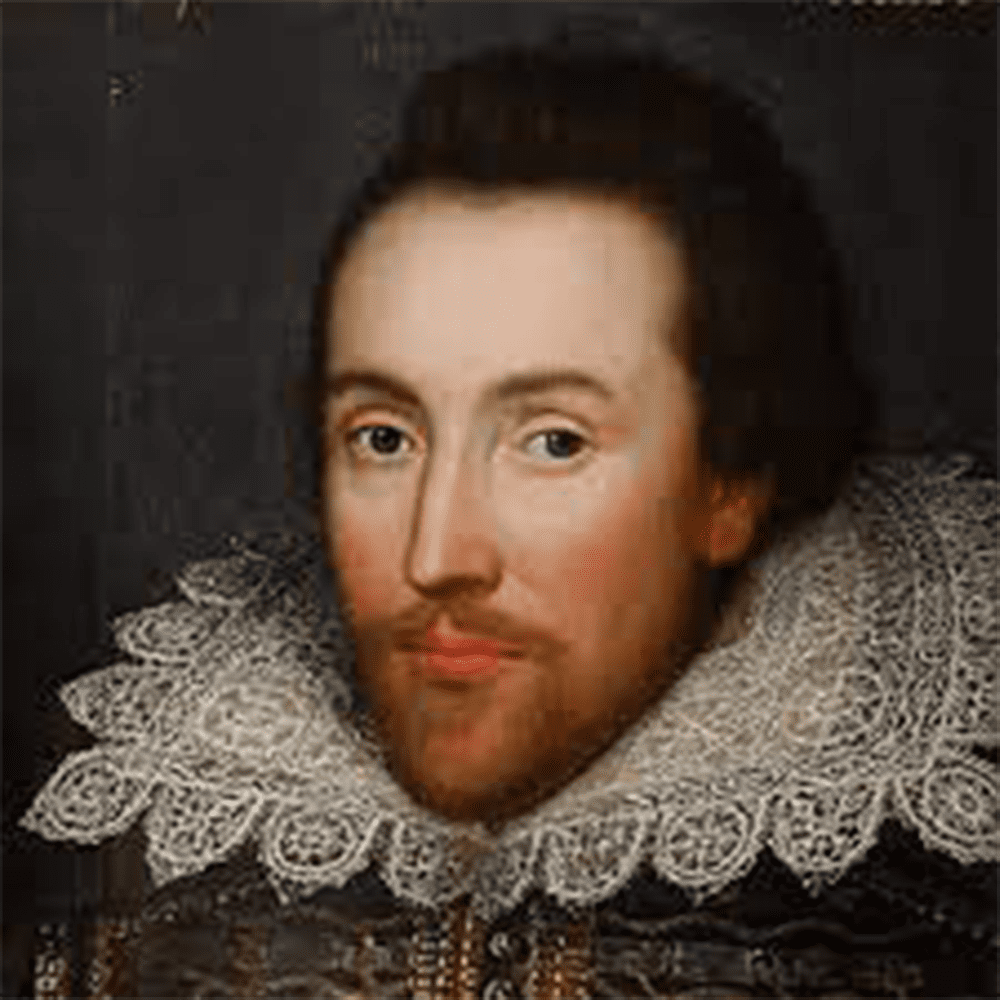
WILLIAM SHAKESPEARE
Playwright
BACKGROUND INFORMATION
Known for his innovative and collaborative choreographic projects, Stephen Mills has works in the repertoires of dance companies across the United States and around the world.
His international career began in 1998 after being chosen Prix d’Auteur at les Rencontres Chorégraphiques Internationales de Seine-Saint-Denis in Paris. In his inaugural season as Artistic Director of Ballet Austin in 2000, Mills attracted national attention with Hamlet, hailed by Dance Magazine as “…sleek and sophisticated.”
Mills’ works showcased at The Kennedy Center include A Midsummer Night’s Dream, The Taming of the Shrew, and performances at the Ballet Across America Festival in collaboration with The Suzanne Farrell Ballet.
In 2005 Mills developed a community-wide human rights collaborative dialogue culminating in his signature work Light/The Holocaust & Humanity Project for which he received the Audrey and Raymond Maislin Humanitarian Award from The Anti-Defamation League. Mills contributed a podcast about Light to the Voices on Anti-Semitism series at The United States Holocaust Memorial Museum and was invited to speak about the work at The United Nations in 2014. Light has been performed in five U.S. cities, in three cities in Israel, and was recently featured in an Emmy Award-winning PBS documentary, Sharing Light.
Felix Mendelssohn
(1809-1847)
German Romantic composer, pianist and conductor Felix Mendelssohn wrote the Overture to a ‘Midsummer Night’s Dream’ and founded the Leipzig Conservatory of Music.
Who Was Felix Mendelssohn?
German composer Felix Mendelssohn made his public debut in Berlin at just 9 years old. In 1819, he joined the Singakademie music academy and began composing non-stop. At Singakademie, he also became a conductor, but continued to compose prolifically. Mendelssohn founded the Leipzig Conservatory of Music in 1843.
Childhood
Pianist, composer and conductor Felix Mendelssohn was born Jakob Ludwig Felix Mendelssohn-Bartholdy in Hamburg, Germany, on February 3, 1809. His parents were Jewish, but converted to Christianity before he, his brother and two sisters were born. When Mendelssohn was 2 years old, he moved to Berlin with his parents and siblings. In Berlin, the young Mendelssohn began taking piano lessons with Ludwig Berger. Mendelssohn also studied composition under composer K.F. Zelter as a child. In 1816, he broadened his lessons, studying under pianist Marie Bigot during an extended stay in Paris, France.
Mendelssohn was quick to establish himself as a musical prodigy. During his childhood, he composed a handful of operas and 11 symphonies. At just 9 years old, he made his public debut in Berlin.
Early Work
In 1819, Mendelssohn joined the Singakademie music academy and began composing non-stop. In 1820 alone, he wrote a violin sonata, two piano sonatas, multiple songs, a cantata, a brief opera and a male quartet. In 1826, Mendelssohn produced one of his best known works, Overture to a Midsummer Night’s Dream. He presented his opera The Marriage of the Camacho, the following year in Berlin. It was the only opera of his performed in public during his life.
At Singakademie, Mendelssohn also became a conductor. In 1829, he conducted a performance of Bach’s St. Matthew Passion. The performance’s success led to other great opportunities, including a chance to conduct the London Philharmonic Society that same year. Inspired by his visit to England and Scotland, Mendelssohn began composing his Symphony No. 3; it took more than a decade to complete. Known as his Scottish Symphony, the work commemorated his visit to Holyrood Chapel in Edinburgh and the highlands.
Mendelssohn continued to compose prolifically while working as a conductor. He wrote the Reformation Symphony in 1830, and followed that accomplishment with a three-year European tour. During that time, he published his first book of songs, entitled Songs without Words (1832). Italian Symphony (1833), another of Mendelssohn’s best known works, was also born of this period. In 1835, Mendelssohn was granted an illustrious role: conductor of the Gewandhaus Orchestra in Leipzig.
Later Work
The same year that he married, Mendelssohn composed his Piano Concerto No. 2 in D Minor. From 1838 to 1844, he toiled away on his Violin Concerto in E Minor. Prior to the piece’s completion, Mendelssohn founded the Leipzig Conservatory of Music and became its director. In so doing, he put Leipzig on the map as the musical center of Germany. After finishing Violin Concerto in E Minor, Mendelssohn conducted a string of concerts for the Philharmonic. In 1846 he presented his newly written Elijah at the Birmingham Festival.
Final Years and Death
In May 1847, Mendelssohn’s sister, Fanny, who was a lifelong inspiration to him, died suddenly. Her death left him so devastated that he soon lost his own zest for life. His health, already compromised by his strenuous career, began to deteriorate rapidly. Six months later, on November 4, 1847, Felix Mendelssohn died of a ruptured blood vessel in Leipzig, Germany. He had recently returned from a brief visit to Switzerland, where he’d completed composition of his String Quartet in F Minor.
Although he was only 38 when he died, Mendelssohn managed to distinguish himself as one of the first significant Romantic composers of the 1800s.
Biographical excerpts courtesy of biography.com.
About Austin Symphony Orchestra
The mission of the Austin Symphony Orchestra Society, Inc. is to enhance the cultural quality of life for the adults and young people of Austin and Central Texas by providing excellence in music performance and educational programming.”
Founded in 1911, the Austin Symphony Orchestra is Austin’s oldest performing arts group. The ASO offers a complete season of musical and educational programming. Masterworks concerts include a series of eight concert pairs running monthly September through May in the state-of-the-art Joe R. & Teresa Lozano Long Center for the Performing Arts. Our season also features the Sarah & Ernest Butler Pops Series: October & February Pops at the Long Center and December & June Pops at Palmer Events Center. Programming for the entire family includes the Halloween Children’s Concert, and the Christmas in the Community, as well as the popular James C. Armstrong Youth Educations Programs, which include Children’s Day Art Park, Young People’s Concerts, High School Concert Tour and a variety of other school programs.
Symphony Square at 11th and Red River is home to the ASO’s administrative offices. This complex of four historic Austin buildings (two of which are owned by the ASO and Waterloo Greenway) is also home to the Women’s Symphony League of Austin.
Please Note: As of January, 2021 our new temporary administration office is located at 1806 Rio Grande St., Austin, TX 78701.
Music Director, Maestro Peter Bay: https://austinsymphony.org/about/conductor/
Austin Symphony Orchestra Musicians: https://austinsymphony.org/about/musicians/
William Shakespeare
(c. 1564–1616)
Often called England’s national poet, William Shakespeare is considered the greatest dramatist of all time. His works are loved throughout the world.
Who Was William Shakespeare?
William Shakespeare was an English poet, playwright and actor of the Renaissance era. He was an important member of the King’s Men company of theatrical players from roughly 1594 onward.
Known throughout the world, Shakespeare’s writings capture the range of human emotion and conflict and have been celebrated for more than 400 years. And yet, the personal life of William Shakespeare is somewhat a mystery.
There are two primary sources that provide historians with an outline of his life. One is his work — the plays, poems and sonnets — and the other is official documentation such as church and court records. However, these provide only brief sketches of specific events in his life and yield little insight into the man himself.
Childhood and Education
Scant records exist of Shakespeare’s childhood and virtually none regarding his education. Scholars have surmised that he most likely attended the King’s New School, in Stratford, which taught reading, writing and the classics.
Being a public official’s child, Shakespeare would have undoubtedly qualified for free tuition. But this uncertainty regarding his education has led some to raise questions about the authorship of his work (and even about whether or not Shakespeare really existed).
Actor and Playwright
By 1592, there is evidence Shakespeare earned a living as an actor and a playwright in London and possibly had several plays produced.
The September 20, 1592 edition of the Stationers’ Register (a guild publication) includes an article by London playwright Robert Greene that takes a few jabs at Shakespeare: “…There is an upstart Crow, beautified with our feathers, that with his Tiger’s heart wrapped in a Player’s hide, supposes he is as well able to bombast out a blank verse as the best of you: and being an absolute Johannes factotum, is in his own conceit the only Shake-scene in a country,” Greene wrote of Shakespeare.
Scholars differ on the interpretation of this criticism, but most agree that it was Greene’s way of saying Shakespeare was reaching above his rank, trying to match better known and educated playwrights like Christopher Marlowe, Thomas Nashe or Greene himself.
Early in his career, Shakespeare was able to attract the attention of Henry Wriothesley, the Earl of Southampton, to whom he dedicated his first and second published poems: “Venus and Adonis” (1593) and “The Rape of Lucrece” (1594).
By 1597, Shakespeare had already written and published 15 of his 37 plays. Civil records show that at this time he purchased the second-largest house in Stratford, called New House, for his family.
It was a four-day ride by horse from Stratford to London, so it’s believed that Shakespeare spent most of his time in the city writing and acting and came home once a year during the 40-day Lenten period, when the theaters were closed.
William Shakespeare’s Plays
While it’s difficult to determine the exact chronology of Shakespeare’s plays, over the course of two decades, from about 1590 to 1613, he wrote a total of 37 plays revolving around several main themes: histories, tragedies, comedies and tragicomedies.
Early Works: Histories and Comedies
With the exception of the tragic love story Romeo and Juliet, Shakespeare’s first plays were mostly histories. Henry VI (Parts I, II and III), Richard II and Henry V dramatize the destructive results of weak or corrupt rulers and have been interpreted by drama historians as Shakespeare’s way of justifying the origins of the Tudor Dynasty.
Julius Caesar portrays upheaval in Roman politics that may have resonated with viewers at a time when England’s aging monarch, Queen Elizabeth I, had no legitimate heir, thus creating the potential for future power struggles.
Shakespeare also wrote several comedies during his early period: the whimsical A Midsummer Night’s Dream, the romantic Merchant of Venice, the wit and wordplay of Much Ado About Nothing and the charming As You Like It and Twelfth Night.
Other plays written before 1600 include Titus Andronicus, The Comedy of Errors, The Two Gentlemen of Verona, The Taming of the Shrew, Love’s Labour’s Lost, King John, The Merry Wives of Windsor and Henry V.
Works after 1600: Tragedies and Tragicomedies
It was in Shakespeare’s later period, after 1600, that he wrote the tragedies Hamlet, Othello, King Lear and Macbeth. In these, Shakespeare’s characters present vivid impressions of human temperament that are timeless and universal.
Possibly the best known of these plays is Hamlet, which explores betrayal, retribution, incest and moral failure. These moral failures often drive the twists and turns of Shakespeare’s plots, destroying the hero and those he loves.
In Shakespeare’s final period, he wrote several tragicomedies. Among these are Cymbeline, The Winter’s Tale and The Tempest. Though graver in tone than the comedies, they are not the dark tragedies of King Lear or Macbeth because they end with reconciliation and forgiveness.
Other plays written during this period include All’s Well That Ends Well, Measure for Measure, Timon of Athens, Coriolanus, Pericles and Henry VIII.
When Did Shakespeare Die?
Tradition holds that Shakespeare died on his 52nd birthday, April 23, 1616, but some scholars believe this is a myth. Church records show he was interred at Trinity Church on April 25, 1616.
The exact cause of Shakespeare’s death is unknown, though many believe he died following a brief illness.
In his will, he left the bulk of his possessions to his eldest daughter, Susanna. Though entitled to a third of his estate, little seems to have gone to his wife, Anne, whom he bequeathed his “second-best bed.” This has drawn speculation that she had fallen out of favor, or that the couple was not close.
However, there is very little evidence the two had a difficult marriage. Other scholars note that the term “second-best bed” often refers to the bed belonging to the household’s master and mistress — the marital bed — and the “first-best bed” was reserved for guests.
Biographical excerpts courtesy of biography.com.
COMING SOON!
THANK YOU TO OUR SPONSORS



INDIVIDUAL PRODUCTION SPONSORS












GOVERNMENT FUNDING SPONSORS



Supported in part by awards from the Cultural Arts Division of the City of Austin Economic Development Department, the Texas Commission on the Arts, and the National Endowment for the Arts.

